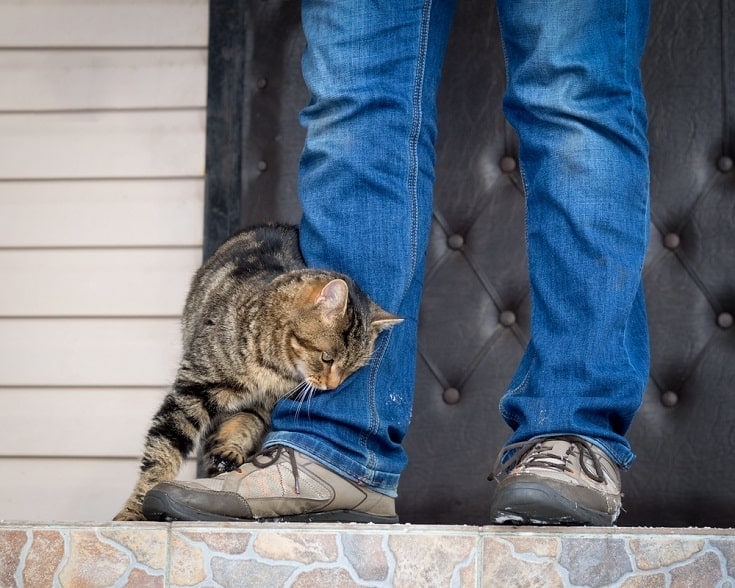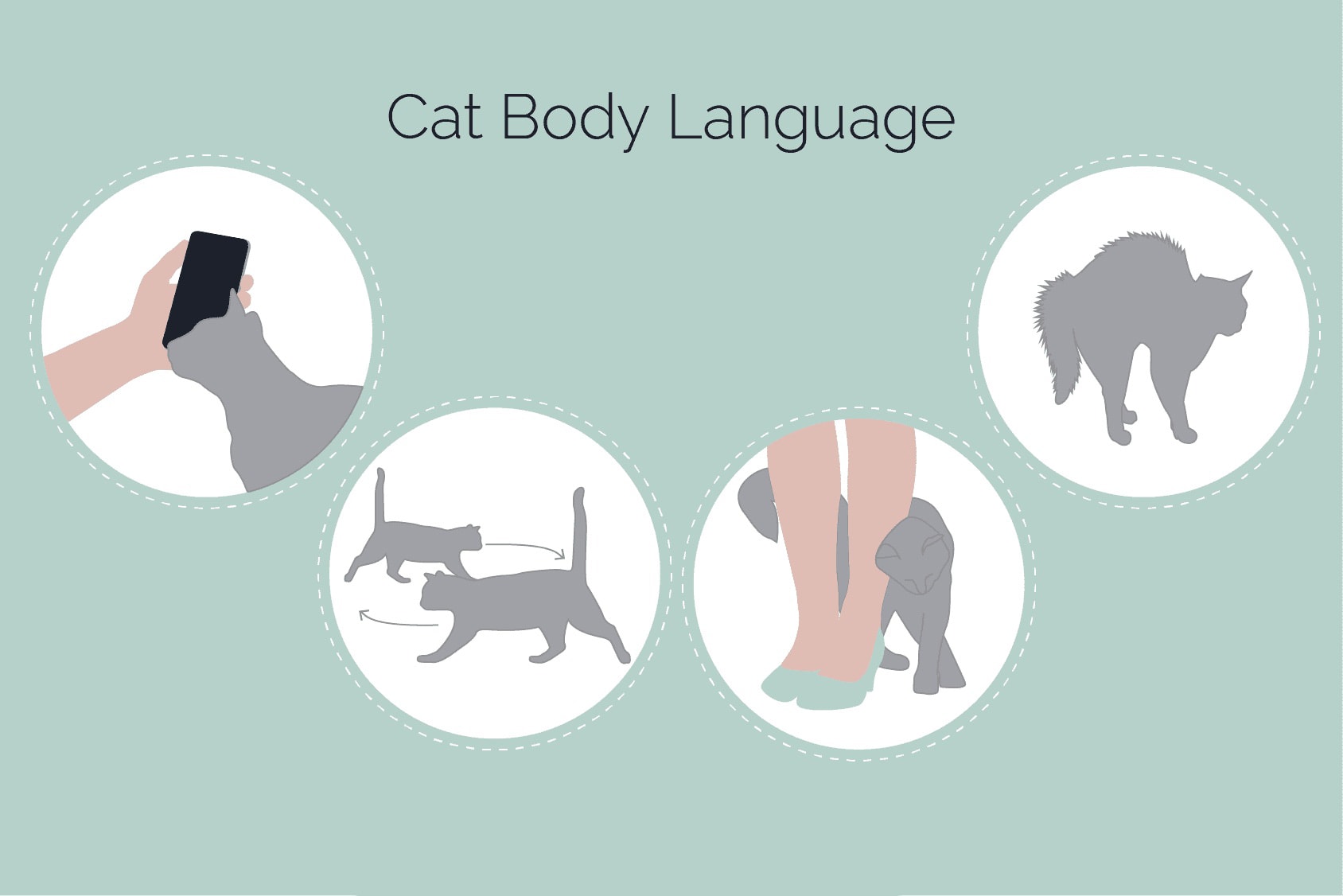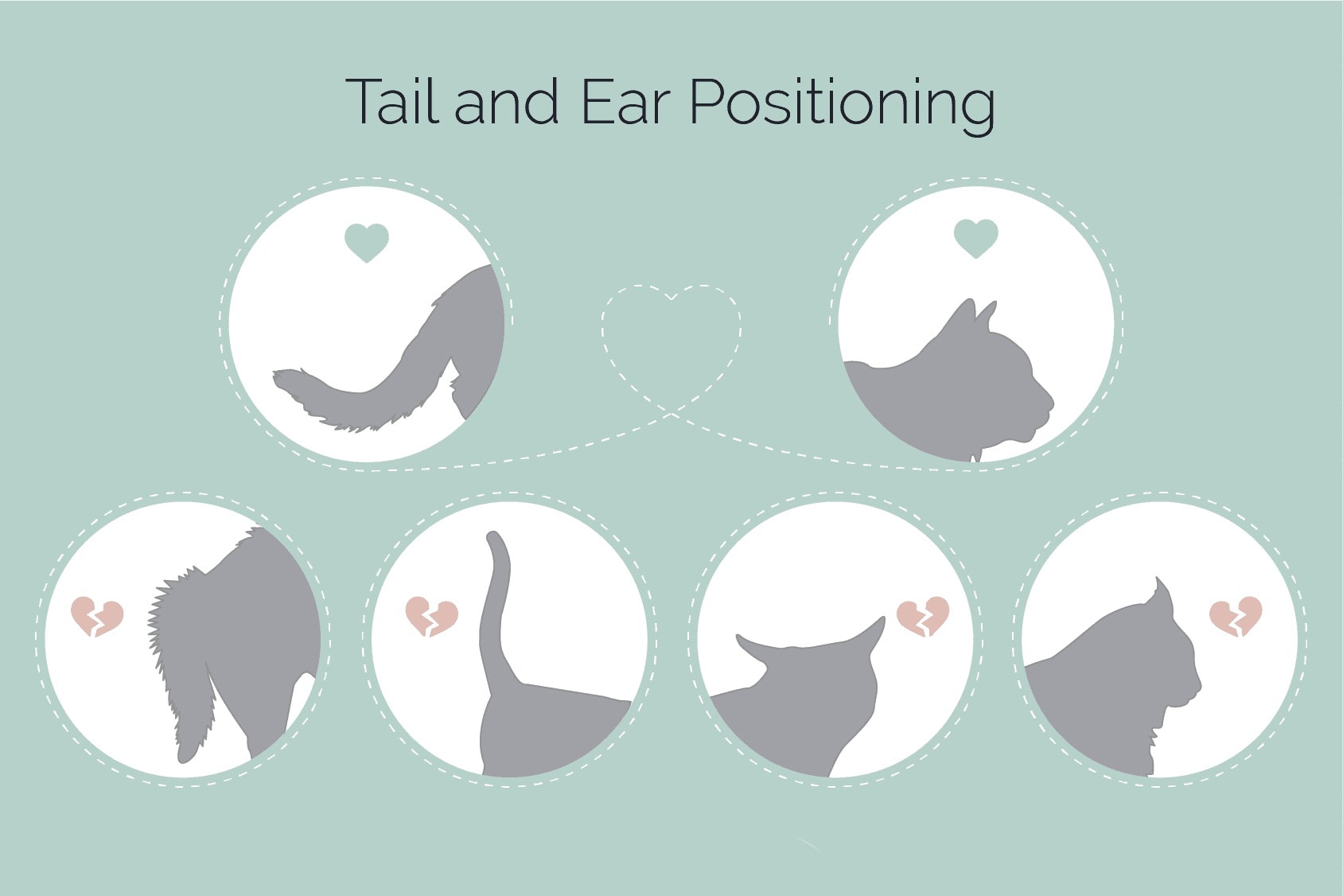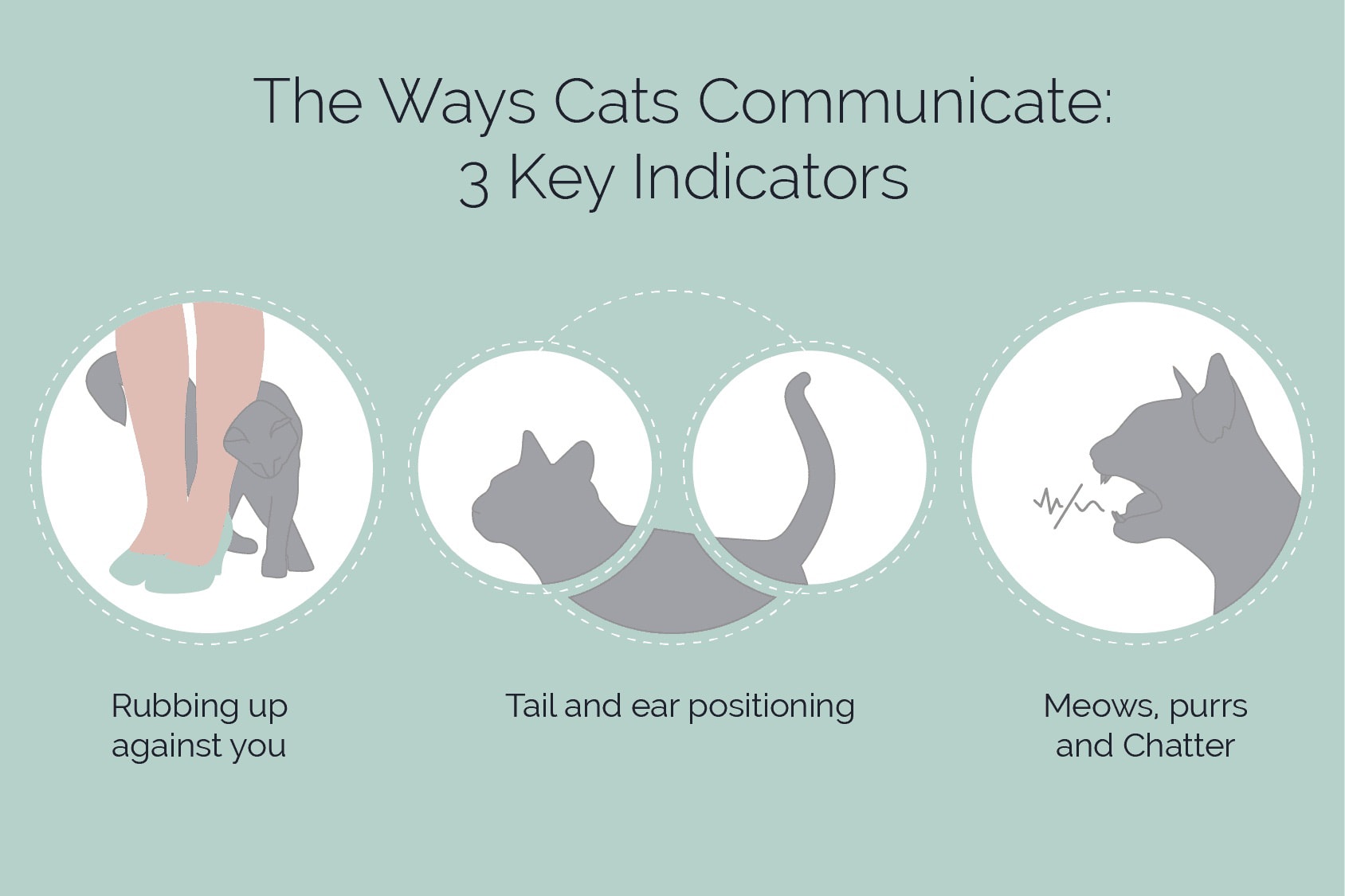
Cats are mysterious creatures even when they’re being sweet and friendly, and most people wish they could communicate better with their feline roommate/landlord. Luckily, you can! By watching their body language and understanding which gestures mean what, you can make better-educated guesses about when your kitty is ticked off and when they’re pleased as punch. Let’s dive in with the details down below, step-by-step.

How to Read Your Cat’s Body Language
1. Pay Attention To How Cats Use Their Eyes
Cats use their eyes to signal their intent, from wide, watchful gazes to narrow, slit-eyed predator eyes. The most common gesture a contented house cat will make with its eyes is to blink slowly when looking directly at you. Unless they’re alert and playful, this is a default look for lounging kitties.
Like other animals, cats use their eyes in combination with their other body parts to create different expressions. Narrowed eyes can mean a cat is nodding off or watchful, depending on what they’re doing and their other body language indicators.
2. Tail & Ear Positioning

Tails are another way cats display their mood to others. Let’s break down the main tail expressions you might be familiar with and what they mean.
Use a tail’s position along with other body languages to figure out if your cat is mad at you or when they’re in a more cheerful mood. A cat’s ears, for instance, go forward when they’re being inquisitive or curious, and it’s common when they’re being playful too. When they’re on the prowl, a cat’s ears may swivel around like little radio dishes. Ears pointing directly up mean your cat is alert, such as a loud but distant noise.
Last but not least, a cat pins its ears directly back and down when they’re exhibiting a fearful or aggressive stance. That means something startled them or perhaps they saw something they really don’t like, and it is commonly referred to as “airplane ears.”
3. Signs of Fear & Anxiety
If you spot any signs of anxiety in your cat like a swishing tail and extreme pacing, they need a dark, quiet, and safe place to retreat to until they can feel safe again. A cat’s favorite toys or puzzle-feeding toys can help calm them through physical and mental stimulation, and you can watch their body language completely change throughout the process.
A cat starts off annoyed, but then they start getting curious, and that helps them relax and forget why they were mad in the first place. Helping your cat by identifying stress triggers via their body language keeps them happy and relaxed and fosters a calmer household for everyone.
4. Identifying Affectionate Gestures

Although more reserved than dogs, cats have several obvious and adorable ways they display affection toward their human companions. Let’s go over some of the cutest ways our kitties show us love below.
In Conclusion
Cats can be hard to understand because their body language differs a lot from ours, but it’s not that hard to learn! Cats have a lot of complex behavior, but learning a handful of common body language expressions can go a long way toward talking with your kitty.
Featured Image Credit: Irina Kozorog, Shutterstock






